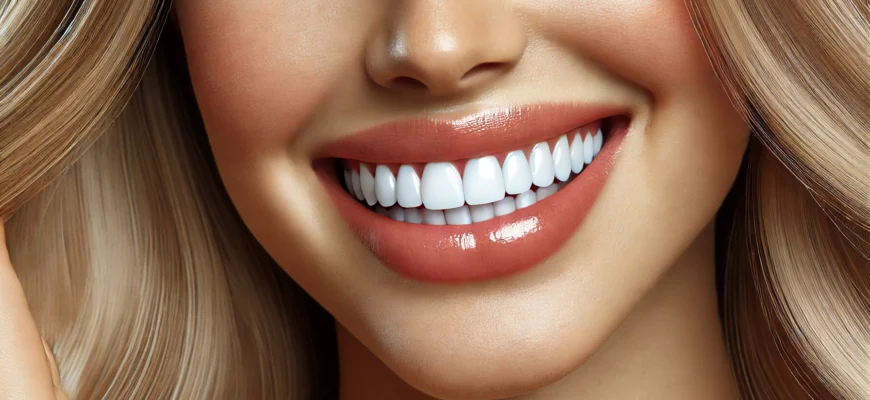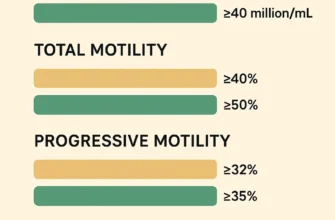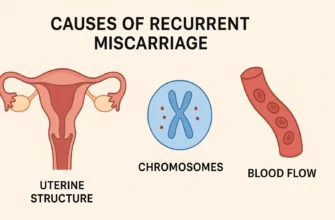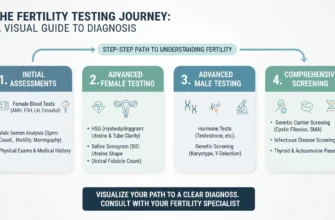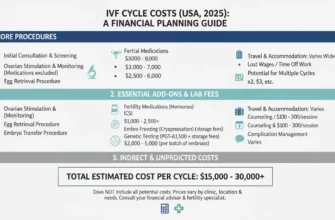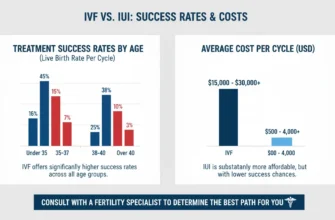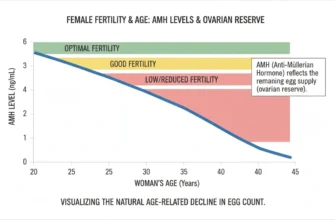No-Prep Veneers Vs. Traditional Veneers: Which is Right for You?
In the pursuit of a perfect smile, many individuals face a crucial decision between no-prep veneers and traditional veneers. Each option presents unique benefits and challenges that can significantly impact both aesthetic results and dental health. Understanding these differences is essential for anyone considering cosmetic dental solutions.
No-prep veneers, known for their minimally invasive nature, promise to enhance smiles with minimal alteration to the original tooth structure. While this approach offers advantages such as preserving natural teeth and often delivering superior aesthetics, it is not a one-size-fits-all solution. Potential drawbacks exist, including limited applicability and risks like tooth sensitivity and color mismatch.
In this article, we will explore the differences between no-prep veneers and traditional veneers, examining their advantages and disadvantages, cost implications, procedural steps, and long-term effects. By the end, readers will be better equipped to determine which option may be the best fit for their individual dental needs.
Advantages of No-Prep Laminate Veneers
No-prep laminate veneers are gaining popularity in cosmetic dentistry due to their numerous advantages over traditional veneers. One of the primary benefits of this dental procedure is its conservative approach towards the natural teeth. Unlike traditional porcelain or ceramic veneers, which require the removal of a significant amount of tooth enamel, no-prep veneers involve little to no tooth reduction. This preserves the integrity of natural tooth structure and reduces potential damage to teeth. The application of no-prep veneers is typically quick, often completed within one to two hours, and usually without the need for anesthesia, making it a pleasant experience for patients.
Moreover, no-prep veneers are ultra thin, measuring between 0.2 to 0.5 mm, which not only ensures a more natural look but also allows for a seamless optical blend with the tooth surface. The slim profile of these veneers means that they can be applied with minimal preparation, negating the need for temporary veneers and streamlining the treatment process. An additional advantage includes their theoretical reversibility, given that the underlying tooth structure is left intact and unaltered. For patients seeking a less invasive route to a beautiful smile, no-prep veneers could represent the ideal solution.
Minimally invasive procedure
Choosing no-prep veneers means opting for a minimally invasive procedure that upholds the principle of preserving natural tooth enamel. The process is painless for most patients, greatly diminishing the stress often associated with dental visits. Dentists can apply no-prep veneers with minimal or no drilling, meaning patients can typically forego the use of Novocaine or other anesthetics. This also makes the procedure faster, as there’s no need to spend time numbing the area or waiting for the anesthesia to take effect.
In terms of treatment flexibility, no-prep veneers score highly since they can be removed if necessary, offering a unique advantage over traditional veneers. With the minimal alteration of the tooth’s surface, patients can rest easier knowing that their original tooth structures are being preserved. No-prep veneers present an especially suitable option when dealing with gaps between teeth or less-than-ideal tooth shapes, where minimal intervention is preferred.
Preservation of natural tooth structure
No-prep veneers are considered a preservationist approach to cosmetic dentistry. The technique is designed to conserve as much of the existing tooth structure as possible. Natural tooth enamel is one of the most durable materials in the body, and no-prep veneers respect its integrity by avoiding grinding or shaving down teeth. This not only maintains tooth strength but also minimizes the risk of postoperative sensitivity that can occur when enamel is removed.
This conservative treatment results in less disruption to the patient’s natural oral architecture, which includes both the teeth and surrounding soft tissue. The focus in contemporary dentistry on maintaining tooth structure for the long-term health of the mouth, aligns well with no-prep veneers. Patients can benefit from lasting restorative work that upholds their natural dentition and provides a reliable, comfortable fit without the invasive procedures of the past.
Enhanced aesthetic results
No-prep veneers are known for delivering exceptional aesthetic results. The intended outcome is to create a natural and beautiful smile makeover that is less invasive than traditional options. These thin veneers are meticulously crafted to provide a fit that appears natural and avoids the overly thick appearance that can sometimes result from traditional veneer procedures. When using high-quality materials such as lithium disilicate porcelain, no-prep veneers offer a translucency that mimics natural tooth enamel, providing excellent color match and aesthetic appeal.
Clinical data has indicated that porcelain laminate veneers placed with a no-prep protocol have demonstrated satisfactory survival rates, with positive assessments of color stability and aesthetic integration even several years post-placement. Furthermore, the promise of a dramatically improved smile without discomfort is a significant draw for many patients, catering to the desire for immediate and visible smile enhancements without the burden of a prolonged or painful dental procedure.
Disadvantages of No-Prep Laminate Veneers
While no-prep laminate veneers present numerous advantages as a minimally invasive cosmetic procedure, certain disadvantages also need to be considered. The application of no-prep veneers requires a high degree of skill from the dental professional, especially during the adhesive phase, which can greatly influence the final outcome. Incorrect handling of the adhesive can result in compromised bonding and longevity of the veneers.
Achieving the desired tooth anatomy without initial preparation can lead to potential overcontours, which may not only detract from the intended aesthetic but also attract pigmentation over time, thereby increasing the risk of cavity infiltration. Additionally, the streamlined margins of no-prep veneers, which aim to minimize overcontours, can make them more susceptible to chipping in the long term.
No-prep veneers add a level of global complexity to the treatment, requiring meticulous care throughout all application phases. And while the veneers are theoretically reversible because they don’t alter the tooth surface upon application, the process of removing them can be difficult and labor-intensive.
Limited Suitability for All Cases
No-prep veneers are not universally appropriate for all dental patients. Although their conservative approach is appreciated, they best serve cases needing only minor preparations. Individuals requiring more extensive tooth alterations may not be ideal candidates for this type of veneer.
Clinical investigations and aesthetic appraisals are essential in identifying suitable treatment options for patients desiring cosmetic enhancements. Typically, healthy teeth with minor aesthetic concerns, such as slight misalignments or discolorations, are better suited for no-prep veneers. Long-term research reflects a 94% survival rate for porcelain veneers that are minimally invasive, signifying their effectiveness in particular scenarios.
Potential for Sensitivity
One of the most notable advantages of no-prep veneers is the reduced risk of post-procedural sensitivity or pain due to the lack of modifications to the tooth surface. Regarded as pain-free, the treatment permits patients to resume their usual activities immediately following the procedure.
The non-invasive nature of no-prep veneers generally eliminates the discomfort or sensitivity linked to dental drills and anesthesia, which are often necessary for traditional veneer applications.
Possible Color Mismatch
Achieving a seamless color match between veneers and the natural teeth is critical, and variations in satisfaction have been noted with some patients rating the color match as low in some cases. Transparency of no-prep veneers may limit their ability to conceal significantly discolored underlying teeth, necessitating detailed conversations about color expectations during initial consultations.
To circumvent potential dissatisfaction with the veneer’s appearance, the overall aesthetic goals, including color preferences, must be precisely evaluated during a comprehensive clinical examination. If this step is overlooked or poorly managed, there is a risk that the veneers may appear bulky, unnatural, or exhibit a noticeable color disparity with the adjacent teeth.
Types of No-Prep Veneers
No-prep veneers present an attractive solution for individuals desiring to improve the aesthetics of their smile in a less invasive manner. Such veneers are also referred to as minimal prep or prepless veneers and include a variety of brands and options. The distinct advantage of no-prep veneers is their application process, which requires little to no alteration of the natural tooth structure. Unlike traditional veneers, which necessitate the removal of a layer of tooth enamel, no-prep veneers preserve the integrity of the natural teeth by employing thin layers of porcelain or composite materials. This conservative approach not only maintains the strength of natural teeth but also reduces the treatment time and discomfort associated with more invasive traditional veneers. Often the dental procedure for placing no-prep veneers can be completed in a short duration, typically spanning from one to two hours, without causing pain to the patient. The materials used in fabricating these veneers are durable and designed to provide a long-lasting cosmetic improvement while keeping the natural teeth practically intact.
Lumineers
Lumineers are among the most popular types of no-prep veneers, made from highly translucent porcelain. This variant of no-prep veneers is celebrated for its ability to replicate the appearance of natural tooth enamel closely, offering a cosmetic solution that is virtually indistinguishable from the real thing. The application process of Lumineers is typically characterized by comfort and ease, usually completed in about one to two hours. Since they are so thin, there’s generally no need for tooth reduction prior to fitting. The cost of Lumineers can vary, but they are considered an investment in one’s smile due to their extended longevity compared to traditional veneers. The average lifespan of Lumineers is also greater, spanning potentially five to seven years more than their traditional counterparts.
DURAthin
DURAthin veneers represent another no-prep option for patients looking to enhance their smile without extensive dental work. Handcrafted by the Experience Dental Studio, DURAthin veneers are composed of porcelain just 0.2 mm thick. The slim profile of these veneers means they can be applied directly over existing teeth without preparation, such as grinding or shaving. The veneers are created to provide a natural shape and appearance to the teeth, offering an aesthetic enhancement while still allowing for the preservation of natural tooth structure. DURAthin veneers are also touted for their durability and the ease with which they can be removed if necessary, ensuring that the integrity and health of the natural teeth beneath are maintained.
Other brands and options
Lumineers and DURAthin are not the only players in the market of no-prep veneers; Vivaneers, by Glidewell Labs, are yet another alternative, measuring approximately 0.3 mm in thickness. Like the aforementioned brands, Vivaneers also bypass the need for invasive tooth preparation before placement. All three brands—Lumineers, DURAthin, and Vivaneers—represent ultra-thin porcelain veneers designed to preserve as much of the natural tooth structure as possible. While there are some differences in thickness and manufacturing processes, the principal advantages they offer over traditional veneers are quite similar. Selecting between these brands often comes down to personal preference, individual patient needs, and specific considerations like marketing strategies or production details. Regardless of choice, these no-prep veneer options all aim to achieve a beautiful and natural-looking smile with a minimum of dental intrusion.
Procedural Steps for No-Prep Laminate Veneers
The journey to achieving a renewed smile with no-prep laminate veneers typically unfolds over two primary visits to the dentist’s office, with these appointments typically spaced a week apart. Each session may last from one and a half to two and a half hours, depending on the individual case.
Initial consultation
The initial consultation is a critical first step towards obtaining no-prep veneers. During this appointment, you will have the opportunity to discuss your smile goals and have your dentist evaluate whether no-prep veneers are an appropriate option for you. This visit often includes a thorough examination of your teeth and possibly some x-rays to ascertain the overall health of your dentition.
At this stage, the dentist will also take impressions or molds of your teeth, which may involve a digital scan, to facilitate the creation of your custom veneers. The consultation is also a chance for the dentist to walk you through the procedure, detailing each step and discussing the different options to help achieve your desired smile.
Design and customization
Subsequent to the initial consultation comes the phase of design and customization. Utilizing the molds or impressions taken during your first visit, the dental professional will work closely with you to select the appropriate shade and design for your veneers, ensuring they complement your natural teeth for a seamless appearance.
In scenarios where composite no-prep veneers are the chosen solution, these can be crafted chairside. This allows the dentist to shape the veneers directly within the mouth, providing an immediate enhancement to your smile. Alternatively, custom-made porcelain veneers are fabricated in a dental laboratory to match your exact specifications.
In some instances, such as in the case with Dr. Ghiam’s approach, teeth whitening may be recommended prior to the placement of veneers. This ensures that the veneers can be matched to freshly whitened teeth, achieving a consistent and radiant smile.
Application process
The application process for no-prep veneers is a testament to the evolution of dental technology, offering a minimally invasive method that can be completed quickly and generally without discomfort. No-prep veneers usually necessitate two visits a week apart, allowing for proper planning and placement.
On the day of application, the teeth are thoroughly cleaned, and the enamel surface is lightly etched to facilitate a stronger bond. A special bonding agent is then applied to the teeth, followed by the precise placement of the veneers. The process is typically free from the need for local anesthesia, making it quicker and more comfortable for the patient.
Post-application, the dentist will clean off any excess bonding material. Some final adjustments and polishing may be applied to ensure a natural and smooth finish. Patients are often pleased to find they can immediately return to their daily routine, now equipped with a beautiful and enhanced smile.
Remember to maintain good oral hygiene practices after getting no-prep veneers and schedule regular dental check-ups to ensure the longevity and appearance of your new smile.
Clinical Survival Rates
Clinical Survival Rates of no-prep veneers have been the subject of various studies, offering an insight into how these cosmetic restorations perform over time. The overarching no-prep veneer survival rate reported stands at 97.4% after an average observation period of 43.1 months. This data reflects the robust nature of these veneers, with a high likelihood of longevity after placement.
Delving further into the intricate world of veneer survival rates, indirect composite veneers demonstrate a substantial survival rate of 91.3% after 84 months (7 years). During this time, researchers noted 7 absolute failures characterized by 4 debonding incidents and 3 instances of fractures among the sample of evaluated veneers. However, even with these occurrences, the clinical evaluations marked a notable success rate of 91.0% when considering both absolute and relative failures.
Moreover, an improvement in survival and quality of restorations has been observed over time. Baseline scores were recorded to have increased significantly upon reevaluation after 84 months, indicating continued performance and resilience of these restorations.
Factors Influencing Longevity
The lifespan of no-prep veneers is determined by several key factors. The remaining enamel following the procedure is paramount since no-prep veneers are bonded directly onto the enamel surface. The durability of composite veneers tends to span between 5 to 7 years, while porcelain counterparts can exceed a decade under optimal conditions. In some instances, research suggests that no-prep veneers may outlive the traditional porcelain veneers, with potential longevity extending beyond 15 years.
The condition of the patient’s existing dental structure is crucial as it can influence their eligibility for no-prep veneers. Any significant damage might rule out this option entirely. Additionally, ongoing oral hygiene practices, dietary habits, and regular preventive care hold considerable weight in the longevity equation for resin veneers, confirming that maintenance is critical for sustaining both their aesthetic appeal and structural integrity.
Comparing to Traditional Veneers
When considering no-prep and traditional veneers, the comparison underscores distinct procedural differences. Unlike traditional veneers which necessitate irreversible alteration to natural tooth structure, no-prep veneers are typically applied without modifying the existing enamel. Traditional veneers, once placed, are a permanent fixture, whereas no-prep veneers, known to last around 5 to 7 years, can be removed if necessary.
No-prep veneers are typically less costly than their traditional counterparts, albeit generally not covered by dental insurance plans. Regarding the transformative impact, traditional veneers are usually recommended for more dramatic cosmetic alterations. In contrast, no-prep veneers yield favorable results for those with relatively minor aesthetic dental issues. Overall, the choice between the two types of veneers depends on a variety of factors including patient preferences, the nature and severity of dental issues, and financial considerations.
Cost Considerations
When considering the investment in no-prep veneers, a variety of factors come into play that influences their cost. These veneers stand out as they require minimal preparation, thus preserving the natural tooth structure; however, they often come with a price tag that could be initially higher than traditional veneers. On average, no-prep veneers can range from $1,500 to $2,500 per tooth in the United States, with traditional veneers averaging slightly lower, between $900 and $2,500 per tooth.
In international markets, like the UK, a single no-prep veneer is comparably priced to its traditional counterpart, with costs ranging from £650 to £1,500 each. The Turkish dental market offers both veneer types at a significantly lower rate; no-prep veneers cost about £150-£300 per tooth, while traditional veneers hover between £200-£250. Despite these prices, it is important to note that dental insurance policies typically do not cover no-prep veneers since they are deemed cosmetic enhancements.
Average Pricing
The average cost for no-prep veneers tends to vary depending on geographic location, the expertise of the dental professional, and the specific materials used in the procedure. Generally, patients can anticipate the average price to be between $800 and $2,500 per tooth. It’s worth noting that quality no-prep veneers tend to be on the higher end of this spectrum, aligning with costs between $1,500 to $2,500 per tooth.
In comparison, traditional porcelain or ceramic veneers are close in price range, with their average cost per tooth also falling between $900 and $2,500. For those seeking a more budget-friendly alternative, composite veneers offer a comparable lifespan of 5 to 7 years and are priced between approximately $400 to $2,000 per tooth. However, potential savings should be weighed against the longevity and aesthetic outcomes. Despite the cost, most dental offices confirm that insurance providers typically do not cover these cosmetic procedures.
Insurance and Financing Options
The elective nature of veneers means that dental insurance plans usually exclude coverage for both traditional and no-prep veneers. Nonetheless, the pursuit of a beautiful smile does not end with insurance limitations. Many dental practices recognize the need for accessible dental care and, as such, offer a variety of financing and payment plans to accommodate their patients’ financial circumstances.
For those unable to pay the full cost upfront, third-party finance companies such as Care Credit, DentalFeePlan, or Enhance Patient Finance provide alternative solutions. These can be an attractive option as they often allow for interest-free periods or low-interest rates on payments. It is crucial for patients to have transparent discussions with their dental providers regarding all the available payment and financing options before starting treatment with dental veneers.
For individuals seeking ways to improve their oral aesthetics with financial assistance, some dental plans may cover alternative treatments that address similar concerns. For example, orthodontic treatments for misaligned teeth might be covered and could be a practical approach under specific circumstances.
In summary, understanding the financial implications and exploring all payment avenues can lead to a more informed decision when considering no-prep veneers as a cosmetic enhancement.
Suitability and Candidacy
No-prep veneers are an ideal solution for individuals seeking to correct minor aesthetic dental issues while preserving their natural tooth structure. Issues such as tooth discoloration, slight misalignments, moderate spacing, and size discrepancies can be effectively addressed with these veneers. They are also beneficial for those with mildly chipped teeth wanting to restore a more uniform look. The best candidates for no-prep veneers are patients who have a generally healthy tooth structure, as the procedure requires little to no tooth reduction, making it minimally invasive compared to traditional porcelain veneers.
Before proceeding with no-prep veneers, it’s imperative to undergo a thorough dental examination by a professional. This assessment will ensure that the teeth are free from more severe dental issues and are clinically sound for the procedure. In scenarios where the cost is a concern or where the dental imperfections are minimal, alternative treatments such as composite bonding may be considered, as these can be more cost-effective and still provide satisfactory aesthetic results. Ultimately, to ensure no-prep veneers are the appropriate choice, the patient must receive a comprehensive evaluation to determine whether this treatment will meet their cosmetic expectations and address their specific dental concerns.
Assessing Patient Needs
When contemplating aesthetic dental treatments like no-prep veneers, a comprehensive clinical examination is crucial. This assessment includes an esthetic evaluation focused on identifying the patient’s goals for their smile, considering preferences regarding tooth color, position, size, and shape. Success in cosmetic dentistry hinges on aligning treatment with patient aspirations for their appearance.
During the evaluative process, the dental team must thoroughly assess the current condition and position of the patient’s teeth. This step is essential for developing an effective and personalized treatment plan. Attention to details like the midline position, lip fullness, occlusion, and the tooth’s incisal edge ensures that the final outcome will be harmonious and natural-looking. A shoddy evaluation and planning phase could lead to unsatisfactory results, such as veneers that appear excessively bulky or color that doesn’t seamlessly blend with the patient’s natural teeth. Clear communication about the desired outcome is vital to avoid mismatched expectations surrounding the modification of tooth position, size, or shape.
Dental Health Evaluation
A comprehensive dental health evaluation is the foundational step before undergoing any cosmetic dentistry procedure, including the application of no-prep veneers. This evaluation includes looking for signs of tooth decay, gum disease, and the potential need for root canal treatment since these conditions can affect a patient’s suitability for veneers.
During the initial visit, dentists will use X-rays to thoroughly understand the patient’s dental health, examining the condition of the teeth and their supporting structures. Though no-prep veneers require minimal tooth preparation, a precise mold of the teeth must be created. This process sometimes entails removing an extremely thin layer of enamel to achieve the best fit and aesthetics, although no-prep veneers often do not require this step.
The health evaluation doesn’t solely focus on clinical needs; it also takes into account the patient’s aesthetic desires and expectations. These considerations are critical to selecting the most suitable course of treatment. By closely examining various factors such as occlusion, midline position, and incisal edge placement in conjunction with desired color changes, dentists can construct a comprehensive treatment plan that optimizes both dental health and cosmetic outcomes.
Long-term Effects of No-Prep Veneers
No-prep veneers, known for their durability and minimal modifications to natural teeth, can offer patients a remarkable long-term cosmetic solution, with a lifespan that may extend up to twenty years. A significant advantage that no-prep veneers have over traditional porcelain veneers is their longevity. Various studies suggest that no-prep veneers have a survival rate that surpasses that of traditional porcelain veneers across a nine-year period. The simplicity of the no-prep veneer installation process, which does not necessitate alterations to the tooth structure, is a primary factor in this extended durability.
Another key to the long-term success of no-prep veneers is the conservative nature of their application. Because no tooth enamel is removed during their placement, procedures generally do not require local anesthesia, thus reducing concerns associated with anesthesia sensitivity or dental anxiety. Furthermore, no-prep veneers are considered reversible in most cases, as they can typically be removed without causing significant damage to the teeth they were bonded to.
Maintenance and Care
The proper care of no-prep veneers is instrumental in sustaining their appearance and longevity. For optimal maintenance, individuals should use a soft-bristled toothbrush and non-abrasive toothpaste when brushing and flossing to prevent scratching the veneer surface. Caution is advised regarding the consumption of foods and beverages that could stain the veneer margins; these include dark-colored sodas, red wine, coffee, and tea. Tobacco products should be avoided entirely, as they are notorious for causing veneer discolorations and stains, especially when coupled with subpar oral hygiene.
Additional protective measures include the use of a custom-fitted nightguard for patients experiencing bruxism, otherwise known as teeth grinding or clenching, to prevent potential damage to the veneers during sleep. Regular dental visits are essential to not only maintain the veneers but also to ensure continued oral health. This consistent professional care is crucial in extending the veneers’ aesthetic appeal over time.
Impact on Oral Health
No-prep veneers are particularly beneficial to oral health due to their minimal impact on natural tooth structure. Unlike traditional veneers, which often involve the removal of a substantial amount of enamel, no-prep veneers typically require minimal to no tooth reduction. This preservation of enamel can significantly reduce the risk of postoperative sensitivity and the need for anesthesia, creating a more pleasant patient experience.
The preservation of enamel with no-prep veneers also means there is less likelihood of periodontal complications, as there is a reduced risk of gum inflammation often linked to over-contoured restorations. It is important to note that the most suitable candidates for no-prep veneers are those with a healthy tooth structure, ensuring that aesthetic enhancements are achieved without undermining overall oral health.
Despite no-prep veneers being a more conservative and less invasive option, they are not universally applicable. Patients who exhibit severe discoloration or extreme malpositioning of teeth might still require the traditional veneer option to realize desired cosmetic results. Thus, a thorough assessment from a dental professional is necessary to determine the most appropriate solution for individual dental concerns.
Side Effects and Risks
No-prep veneers are often lauded for their minimal invasiveness compared to traditional porcelain veneers. Despite being marketed as reversible or semi-permanent, it’s important to recognize that they may still cause some alterations to the tooth surface. The process does avoid some issues such as the need for anesthesia and reduces the risk of postoperative sensitivity, but it’s not without potential complications.
The minimal tooth preparation, often seen as an advantage, complicates the positioning of these veneers, which can impact the overall aesthetic outcome and the longevity of the rehabilitation. This can be particularly problematic when striving for natural tooth shapes and the seamless integration into the smile line for beautiful smiles.
Furthermore, the simplification inherent in the placement of no-prep veneers may contribute to periodontal issues. Gum inflammation can arise due to over-contoured restorations that don’t properly conform to the natural tooth structure. Additionally, no-prep veneers may not be the ideal solution for dental issues involving severe discoloration, deformity, and malposition. In such instances, the absence of tooth reduction proves a limitation for achieving the desired cosmetic results.
In summary, while no-prep veneers hold certain advantages and offer a potentially less invasive procedure, they may introduce aesthetic challenges and oral health risks that need careful consideration.

